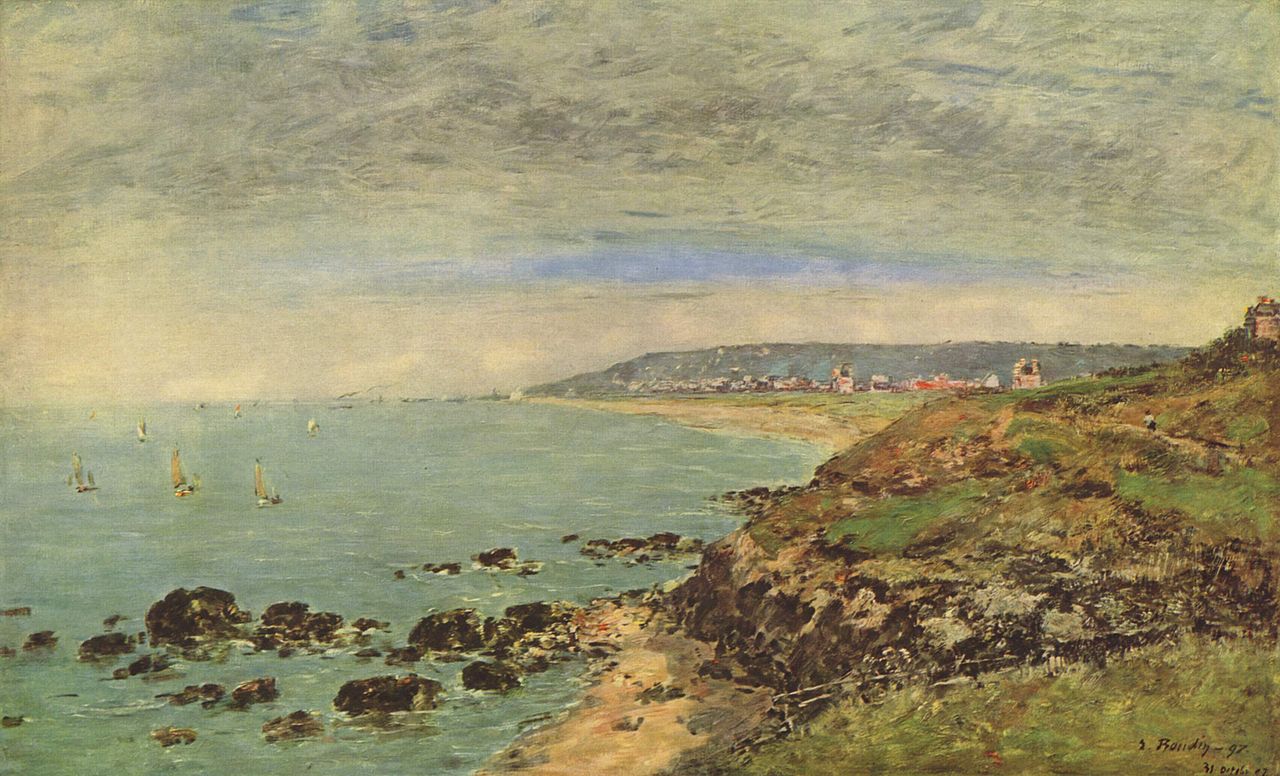Practical information
Registration is now closed.
If you have any questions, please contact the organisers,
Stéphane Launois and
Matthew Pressland.
Some hotels in Caen: Hôtel du Château,
Hôtel des Quatrans,
Hôtel la Fontaine.
Conference venue: Room S3 045, Sciences 3, UFR des Sciences, Université de Caen-Normandie Campus 2.
Campus 2 is to the north of Caen, and should not be confused with the university’s city campus (Campus 1). It is easily reachable from the city centre by tram line T2, which terminates at Campus 2.
The conference dinner will take place on Tuesday, March 18 at 19:30 at the restaurant L’Aromate, 9 Rue Gemare, Caen.
Titles and abstracts
Karin Baur: Orbifold diagrams and skew-group categories
Alternating strand diagrams (as introduced by Postnikov) on the disk have been used in the study of the coordinate ring of the Grassmannian. In particular, they give rise to clusters of the Grassmannian cluster algebras (Scott) or to cluster-tilting objects of the
Grassmannian cluster categories of Jensen–King–Su (Baur–King–Marsh). On the other hand, orbifolds have also been related to cluster structures. Here we introduce orbifold diagrams as quotients of symmetric Postnikov diagrams and show how to associate quivers with potentials to them. This is joint work with Andrea Pasquali and Diego Velasco.
Alessandro Contu: A quantum cluster algebra structure on the semi-derived Hall algebra
In 2011, Hernandez–Leclerc discovered a surprising isomorphism between the quantum Grothendieck ring of a quantum loop algebra of ADE type and the derived Hall algebra of any Dynkin quiver of the same type. Thanks to this isomorphism, we can endow the derived Hall algebra with a quantum cluster algebra structure, by transporting the quantum cluster algebra structure on the quantum Grothendieck ring described by Fujita–Hernandez–Oh–Oya in 2023. On the other hand, generalizing Bridgeland’s work, in 2014, Gorsky (and later, in a broader setting, Lin–Peng) defined the semi-derived Hall algebra and showed that the derived Hall algebra can be obtained as a specialization. Building on the combination of these results, we provide the semi-derived Hall algebra with a quantum cluster algebra structure. In particular, we propose a lift of the \((q, t)\)-characters to the semi-derived Hall algebra, showing that they satisfy a lifted version of the quantum T-system. Finally, we define a braid group action on the semi-derived Hall algebra, lifting Kashiwara–Kim–Oh–Park’s braid group action on the quantum Grothendieck ring.
Mikhail Gorsky: Categorifying cluster structures on braid varieties
A braid variety is a certain affine algebraic variety associated with a simple algebraic group \(G\) and a positive braid of the corresponding type. These varieties generalise open Richardson subvarieties in flag varieties and open positroid strata in Grassmannians; they also appear in the context of invariants of Legendrian links. Recently, they were proved to admit cluster structures. One explicit construction of many cluster seeds, introduced in joint work with Roger Casals, Eugene Gorsky, Ian Le, Linhui Shen, and José Simental, involves diagrams called Demazure weaves. In the first part of the talk, I will discuss this setup. Then I will report on joint work in progress with Roger Casals towards an additive categorification of this construction and explain its relevance for the study of Lagrangian fillings of Legendrian links.
Jan E. Grabowski: Hom-finite exact cluster categories are quantized
In recent work with Pressland, we have obtained the claim in the title, namely that Hom-finite exact cluster categories have natural quantizations. This generalises the same result for the module categories associated to preprojective algebras by Geiß–Leclerc–Schröer, used to obtain quantum cluster algebra structures on quantized coordinate algebras of unipotent subgroups of Kac–Moody groups. We will explain how our use of the term “cluster category” is somewhat broader than in the extant literature and sketch the proof of the claim.
Samuel Lopes: Derivations of quantum algebras and beyond
Quantum nilpotent algebras (QNA) try to replicate the structure of enveloping algebras of nilpotent Lie algebras and their deformations, which often exhibit behaviour more akin to enveloping algebras of solvable Lie algebras. I will discuss techniques used in joint ongoing work with Launois (Caen) and Oppong (Greenwich) to understand and describe the derivations and Hochschild cohomology of these and related algebras, aiming at discovering new families of analogues of Weyl algebras.
Théo Pinet: Truncated shifted Yangians, Weyl algebras and cluster categorification
Shifted Yangians are infinite-dimensional algebras of capital importance in the study of integrable systems, Coulomb branches and cluster categorifications. They admit remarkable quotients, called truncations, which are (graded) quantizations of generalized slices in affine Grassmannians.
Recently, it was shown by Krylov–Perunov that some generalized slices, called “minuscule”, are Poisson-isomorphic to cotangent bundles of affine spaces. In this talk, we show that the latter geometric identification can be quantized and deduce an explicit description of “minuscule truncated shifted Yangians” in terms of Weyl algebras. We finally use this explicit description to gain new insights on the representation theory of shifted Yangians as well as on important conjectures of Frenkel–Hernandez and Geiss–Hernandez–Leclerc on monoidal categorifications of cluster algebras.
This is joint work with Artem Kalmykov, Joel Kamnitzer and Alexis Leroux-Lapierre.
Xiuping Su: Auslander algebras and (quantum) cluster structure on flag varieties
I will construct an exact structure on the good module category \(\mathcal{F}_\Delta\) of the Auslander algebra associated with the truncated polynomial ring \(\mathbb{C}[x]/(x^n)\). I will show that under the exact structure, \(\mathcal{F}_\Delta\) admits a cluster structure. Then I will explain how \(\mathcal{F}_\Delta\) can be applied to study flag combinatorics and the (quantum) cluster structure on flag varieties.
